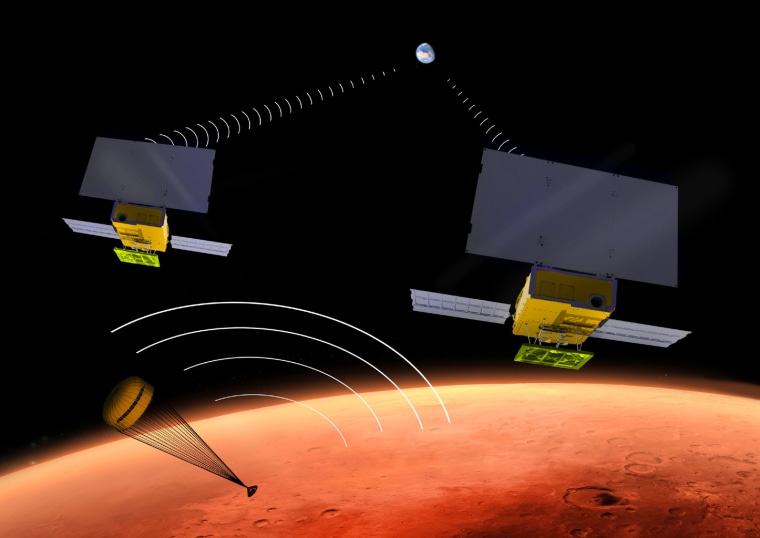NASA says its next landing on Mars will be monitored next year by the first CubeSats to be sent into deep space. And that's just the beginning of what could eventually become a big boom for tiny interplanetary probes.
Next year's flyby mission is known as Mars Cube One, or MarCO for short. Each of the twin nanosatellites will be only about as big as a briefcase, and they'll be launched next March by the same rocket that sends NASA's car-sized InSight lander toward the Red Planet.
Related: Someday, Small Satellites Will Do Your Bidding
Small satellites, and particularly CubeSats, are revolutionizing the space industry because of their small size, off-the-shelf construction techniques and the low cost of operation. Universities have been building them for years, and more and more of them are being sprung into orbit.
The best-known examples include the constellation of Earth-watching CubeSats that were deployed from the International Space Station last year for the Planet Labs commercial venture; and the LightSail nanosatellite that unfurled an experimental solar sail this week.
It's challenging to send CubeSats beyond Earth orbit, because you can't put much propulsive capability into such a little box. NASA is getting around that problem by launching the MarCO satellites as ride-along secondary payloads with the InSight lander.
Related: Engine Could Turn CubeSats Into Interplanetary Explorers
Each MarCO satellite will fit within a space that's about 15 by 10 by 5 inches (36.6 by 24.3 by 11.8 centimeters) when it's stowed. The MarCO satellites and InSight will all be launched on an Atlas 5 rocket from Vandenberg Air Force Base in California in March, but after liftoff, the CubeSats will separate from the booster and travel on their own trajectories to Mars.
Along the way, the MarCO mini-probes will deploy two radio antennas and two solar panels. While InSight descends to the Red Planet's surface, the CubeSats will be flying past the planet. They'll use their softball-sized radios to pick up InSight's signals in the UHF band and relay them to Earth on a different frequency known as X-band radio.

NASA's Mars Reconnaissance Orbiter will also be listening for InSight's signals, but it can't simultaneously receive UHF signals and send X-band signals. That means the orbiter might not be able to pass along the signals confirming a successful landing (or mission failure) until more than an hour has passed. In contrast, MarCO could spread the word immediately.
"MarCO is an experimental capability that has been added to the InSight mission, but is not needed for mission success," Jim Green, director of NASA's planetary science division, said Friday in a news release.
If MarCO works, that could open the door for future Mars missions to bring their own communication relays, which would come in particularly handy during entry, descent and landing.
Small rockets for small satellites
In any case, NASA intends to use a lot more CubeSats in years to come. The space agency is looking for small commercial rockets that are optimized to put CubeSats into Earth orbit or send them into deep space.
Related: NASA Pledges $5 Million for 'Cube Quest'
NASA is setting up a new category called Venture Class Launch Services. Under the terms of the agency's request for proposals, NASA would negotiate contracts with commercial providers to accommodate a payload weighing 132 pounds (60 kilograms) on a single launch, or two 66-pound (30-kilogram) payloads on two separate launches.
The launches would have to be executed by April 15, 2018, NASA said.
"This will start to open up viable commercial opportunities," Mark Wiese, chief of the flight projects office for NASA's Launch Services Program, said Friday in a news release. "We hope to be one of the first customers for these companies, and once we get going, the regular launches will drive the costs down for everyone."
